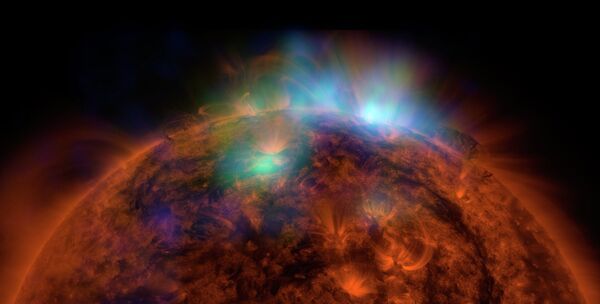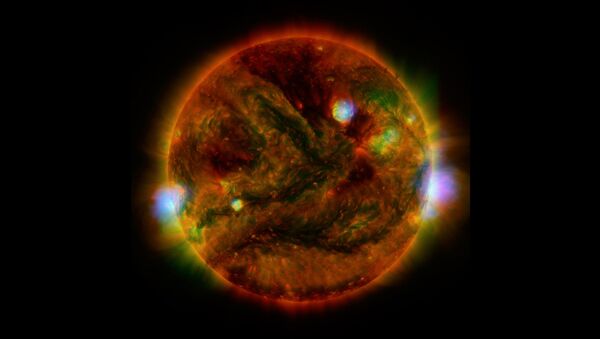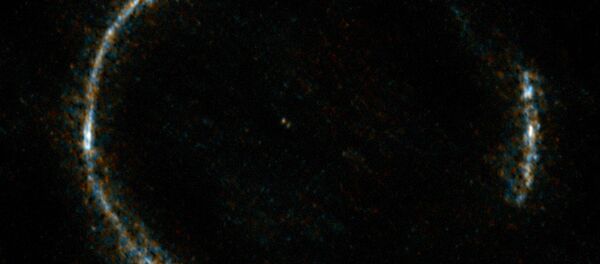"We can see a few active regions on the sun in this view," said Iain Hannah of the University of Glasgow, Scotland, who presented the image on July 9 at the Royal Astronomical Society's National Astronomy Meeting in Llandudno, Wales. "Our sun is quieting down in its activity cycle, but still has a couple of years before it reaches a minimum."
The scientists hope the telescope might be able to detect nanoflares, which may produce electrons and high-energy X-rays NuSTAR is capable of detecting. Tiny nanoflares have only one-billionth the energy of flares and are difficult to identify, but might explain the mystery of why the sun's atmosphere, or Corona, is much hotter than the actual surface of the sun below it.
The NuSTAR space telescope was launched into orbit in June 2012, when it began its two year primary mission to use it high energy X-rays to study collapsed stars, black holes, and supernova remnants.

On Wednesday, Hannah explained that though the sun is in moving towards the quieter end of its 11 year cycle of activity, but added "we still need the sun to quiet down more over the next few years to have the ability to detect these events."
In addition, the solar scientists will try to use NuSTAR to detect a hypothesized dark matter particle called the axion, which could shed light on the mystery of dark matter.





